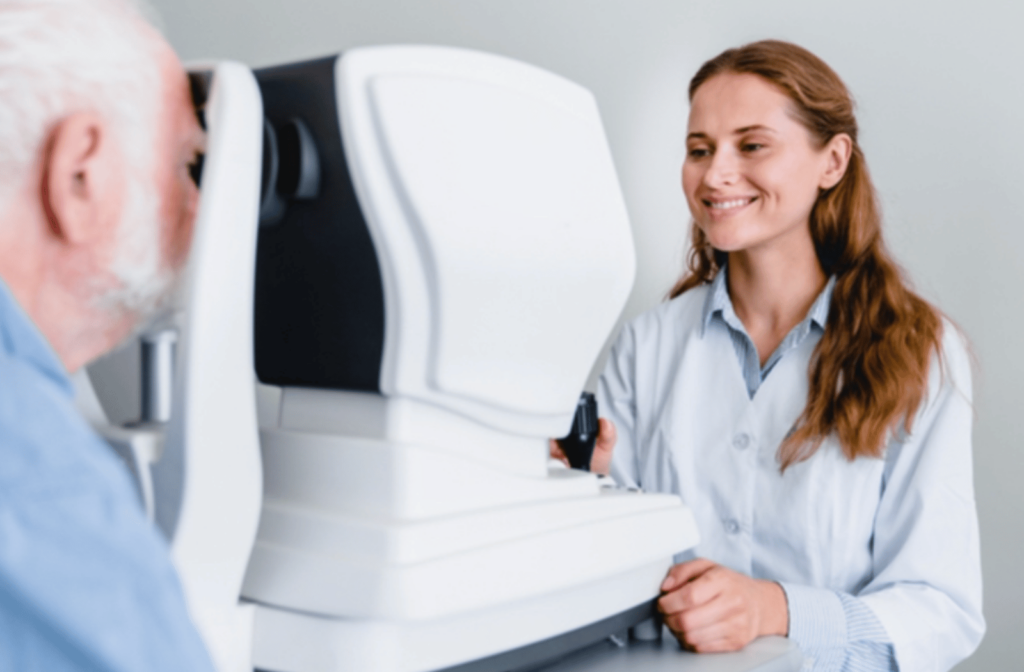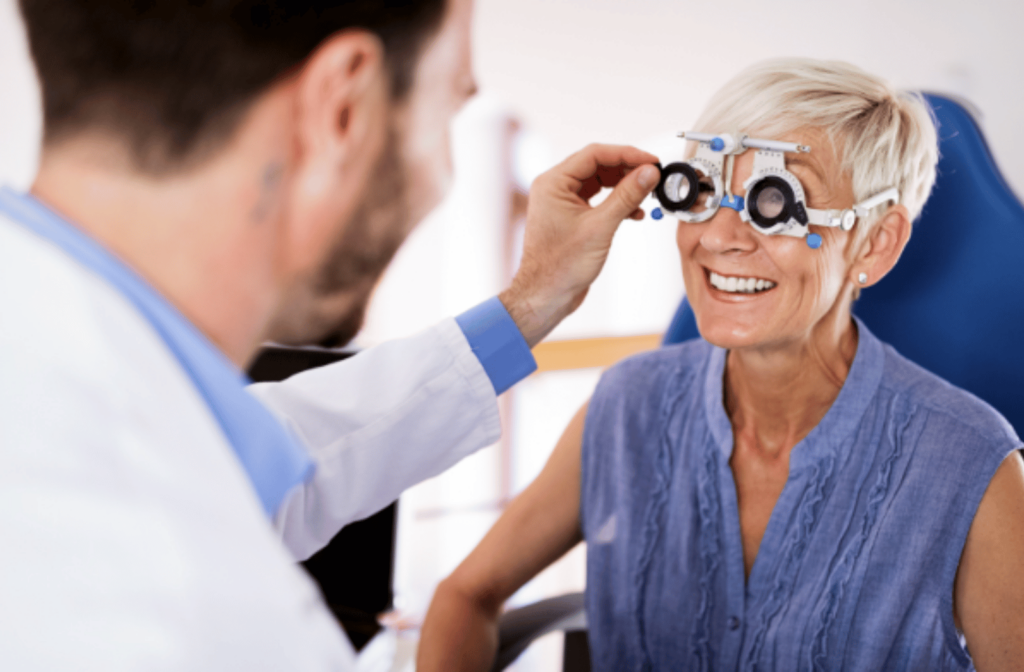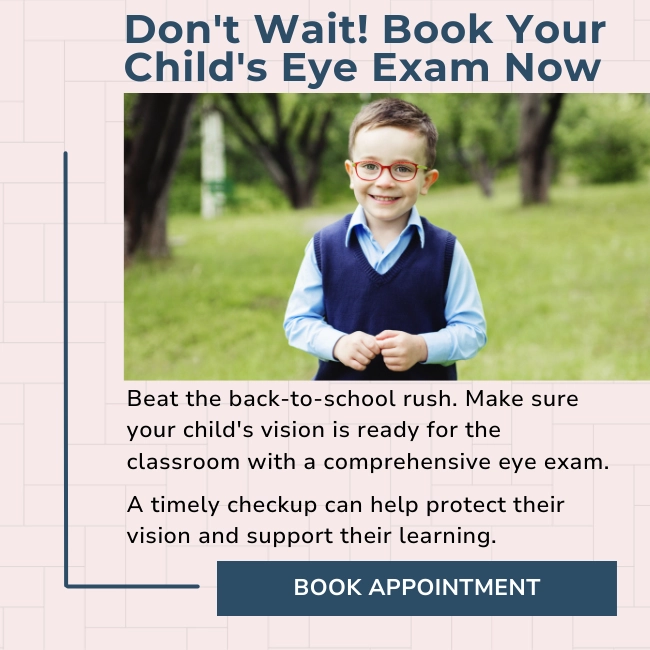Myopia, or nearsightedness, is one of the most common vision problems globally, and it’s only growing. Some research suggests that 50% of the world’s population will have myopia by 2050.
So, does myopia get worse with age? Yes, for many people, myopia develops in childhood and becomes worse over time.
Myopia can worsen because of elongation of the eye as it grows, visual strain, or both. Early diagnosis and management are the best methods of preventing severe myopia later in life.
Primarily, myopia control is a treatment that starts in childhood to help reduce how severe myopia becomes over time. The best way to know if your child has myopia and would benefit from myopia control is during a children’s eye exam.
What Causes Myopia?
Refractive errors like myopia (nearsightedness) occur when the shape of your eye doesn’t reflect light properly.
Myopia is when your eyeball shape is too long, or the cornea is too steeply curved. The condition causes vision where your distance vision can appear blurred, but close objects are sharp.
Nearsightedness is usually diagnosed between ages 6–14 and often worsens with age. As you age, myopia progresses, causing worsening symptoms. Usually, myopia stabilizes or slows progression in your early 20s, as that’s when most people’s eyes are done growing.
What causes myopia isn’t clear, but there are certain risk factors. For example, you’re more likely to develop myopia if one of your parents had it.
There’s also a link between myopia and spending too much time indoors. Too much near-vision activity, such as reading, writing, drawing, or working on a computer, can increase your risk of developing myopia.
Taking a break from near-distance activities and engaging in activities that exercise your distance vision can decrease risk factors. You can help prevent worsening myopia by practicing the following:
- Limiting screen time
- Wearing sunglasses outside
- Booking regular eye exams
- Avoiding working or reading in dim light
- Using protective eyewear (sports, hobbies, etc.)

High vs. Low Myopia
Nearsightedness or myopia can be described in terms of low or high. People with low myopia have minor vision impairment and may not need glasses with a high prescription or myopia control.
On the other hand, high myopia can include severe vision loss and increased risk factors for sight-threatening conditions, including glaucoma, retinal detachment, cataracts, and degenerative myopia. It can also eventually lead to degenerative myopia.
Degenerative Myopia
Degenerative myopia has many names, including pathological myopia, progressive myopia, myopic macular degeneration, or myopic maculopathy.
Progressive myopia can happen at any age but tends to present in adults in their late 30s and 40s.
Progressive or degenerative myopia can begin in infancy and can progress rapidly. Patients with the condition are at a higher risk of vision loss, light sensitivity, headaches, floaters, and cataracts.
As degenerative myopia progresses, it can also increase your risk of other eye conditions. The unusual eye shape is commonly larger than normal, stretching some tissues too thin. As a result, the thinning layers at the back of your eye and retina deteriorate, causing the development of age-related macular degeneration (AMD) or retinal disorders.
Myopic degeneration shares similarities with age-related macular degeneration, leading to significant central vision loss (straight-ahead vision).
Myopia Control Options
Myopia can’t be reversed, but you can slow its progression. Most methods focus on preventing and diagnosing symptoms early, as myopia control is most effective in children when the eye is still growing.
Myopia control treatments include:
- Atropine eye drops: These are the same type of eye drops used to dilate your eyes during an eye exam. When used in low doses, atropine has been shown to slow myopia progression in children.
- MiSight contact lenses: These 1-day contact lenses use myopic defocusing to reduce the growth that leads to worsening myopia. They can be used in children as young as 8, and are daily contact lenses, which make them more comfortable and easy to use.
- Stellest eyeglass lenses: These special glasses lenses encourage peripheral defocusing, which is thought to slow the progression of myopia by an average of 67%. They are also an option for kids who might not be able to wear contact lenses for myopia control.
Talking to your optometrist can help you determine which myopia control option is best for you or your child. The more your eye care team knows about you and your eye health, the better they can treat your symptoms and protect your vision.
Myopia Doesn’t Have to Get Worse with Age
If myopia affects your life, visit Trail Vision Care Clinic about myopia control. Together we can improve your comfort and find solutions for you or your family.
Book an appointment to learn more about your options and develop a plan for your vision!




